
Relook at the famed 'Gujarat Model'
Prof Ujjwal K Chowdhury
Gujarat assembly election, scheduled to be held on 1 and 5 December 2022, is viewed by many as a dress rehearsal for 2024 Lok Sabha election. When the suffering people have been pointing towards redressal of some local issues like absence of cleanliness, sewage problem, shortage of water supply, troubles created by stray cattle, insufficiency of streetlights, etc., it is evident that they are not fully aware that assembly elections are being fought on ideological standpoints and policy decisions. That the state is in shamble and the much-trumpetted ‘Gujarat model’ of development has proved to be a hoax par excellence.
Like other states, the people of Gujarat are also back-broken by steep rise in prices to the tune of 400% in last twenty years. It is not that the government cannot control the spurt in prices if it so wants. Apart from the fact that price rise is an inevitability in a capitalist economy, artificial shortage triggered by massive hoarding, black marketing, speculative forward and other derivate trading in food crops etc. are making the situation further worsened.
Other problems tormenting the people of Gujarat along with their fellow citizens in other parts of the country include mounting unemployment, closure of one after another industry throwing thousands out of job resulting in fast diminishing of means of earning. Some facts would show what peril the state of Gujarat is.
Close down of industries
More than 2000 industrial units in various estates of the Gujarat Industrial Development Corporation (GIDC) are closed, according to information provided in the Assembly by Gujarat Government in a written reply. With regard to this data on closed units, Secretary General of Federation of Gujarat Industries (FOGI) told KNN India. “There could be various reasons attached to it but do not rule out that a few might have not been able to sustain because of demonetization and roll out of GST due to slow refund circle process in first year.”
According to the media reports collated data, around 2,069 units were shut in GIDCs in 31 districts as of December 31, 2018. In Jamnagar, 36 units were shut in GIDCs, but 19 of them closed down since 2016. Similarly, 19 out of 50 units in Kutch, and 10 out of 18 units in Banaskantha downed shutters in last two years, the state CM said in 2019. A total of 89 industrial accidents happened between January and July 2020 across Gujarat. Over 130 workers died in industrial accidents in Gujarat during the first seven months of 2020, of which 57 per cent were reported in four months after the Covid lockdown was lifted in phases in the state.
Unemployment and job loss
The CMIE, in its “Unemployment Rate in India” report, noted that Gujarat’s unemployment rate which was 6.7% in March 2020, increased to a whopping 18.7% in April 2020. After Covid lockdown, no perceptible improvement is reported. In 2014, when Prime Minister Narendra Modi promised to bring the Gujarat model of development to India, the focus of the state was on megaprojects at the expense of SMEs which hurt job creation, says a new book. But the Gujarat Labour and Employment Minister Dilip Thakor said in a written reply during Question Hour in the assembly in February 2020 (pre-pandemic period) told that 4.58 lakh educated youth were registered with various state employment exchanges. Of these, 4.34 lakh are 'educated' while 23,433 are in the 'semi-educated' category. Six states saw rising joblessness in cities in July-September 2019. The highest spike in the urban unemployment rate was seen in Gujarat where it rose 1.3 percentage points to 4.3 per cent. In the beginning of June 2022, some 17 lakh job aspirants applied for 3400 vacant posts of Talati (village panchayat executive head), indicating the unemployment crisis in Gujarat.
Gujarat showed signs of distress related to economy when state authorities recorded 294 suicides in 2018 where reason for ending life was termed as ‘poverty’. 318 persons ended their lives citing ‘unemployment’ as the reason. The figures were 163% and 21% more than the ones recorded in 2017. Data on crime tabled by the state home ministry in the assembly stated that a total of 14,702 cases of suicide were registered in Gujarat in the last two years, suggesting that on an average nearly 20 persons took their lives every day. Minister of State for Home Pradeepsinh Jadeja said 90 persons had ended their lives in Kheda and 111 persons had committed suicide in Anand district of Gujarat in 2019. As the World Suicide Prevention Day is observed annually on 10 September, the NCRB report gave a snapshot of what drove Gujaratis to the brink in 2021. The number rose by 48%. Pravin Valera, coordinator of Jeevan Aastha Suicide Prevention helpline said that the call volumes increased by about 20% since 2020, which has remained high even in 2022. Notably, while PM Modi has claimed to have issued lakhs of appointment letters, only 373 people of Gujarat got the same.
Condition of the workers
The condition of the workers in the state is perilous. The minimum wage in the state has been marginally increased in the state only in October last after 25 years, i.e., in the face of ensuing election. Gujarat is having the lowest daily wage in the country which is only Rs. 220/- for agricultural labourer. The latest labour codes brought in by the Central Government and implemented by the State Government have opened up the vista of exploitation of workers.
After the catastrophic fire that broke out at Nandan Denim Limited’s factory, one of the largest in Narole, a major hub for the famous textile and garment industry of Ahmedabad, during normal business hours on 8 February 2020 in which seven workers died of burns and asphyxiation and many were severely injured, a study, ‘Looking Beyond Fire Extinguishers’, was published in 2021 by Ajeevika Bureau, a non-profit organization, on the issue of labour practices leading to the fire accidents. The study which was published in ‘The Wire’ dated 11-09-21 found unsafe, inhumane and exploitative working conditions. In the last two years, 322 industrial accidents have occurred in Gujarat. The frequency of such accidents highlights the lack of basic worker safety and compliance with workplace safety laws i.e. the Factories Act, 1948. Workers are aware of the involved risks to their lives but continue nonetheless to fulfil their basic needs of food and shelter, the report found. The employers also know the consequences of their inaction. The factories were discovered to have hazardous working conditions such as exposure to dangerous substances, intense heat and dust pollution.
The denial of safe and healthy working conditions to employees stems from the variety of factors in which employers shift responsibility for safety and health to the under-equipped contractor and, eventually, the employee. Even regular employment in these factories may not always provide a solution to the problem of safety and abusive working conditions that limit worker’s ability to raise concerns, according to the study. Factories normally hire workers under a variety of contractual arrangements and pay them on a daily or piece-rate basis. Only 4% of the total surveyed workers employed in higher roles were on the payroll of the factories. The remaining 96% were recruited through casual contracts. 12-hour work shifts are the norm while 40% of the surveyed workers agreed to have worked overtime including 24 hours without any break.
The National Sample Survey Organization revealed that there are about 4.20 lakh child laborers in the labor state. They do not go to school because of growing poverty and hunger. In Gujarat, 4% of the labourers are child laborers. In rural areas, Gujarat ranks second in the country in employing child labour.
Predicament of the peasants
The condition of peasants in the state is no good. Peasants are selling land out of distress implying steady decline in the number of poor and marginal peasants. The number of agricultural workers has increased by 17 lakhs. Even after 75 years of independence, the peasants of Gujarat, like other states are just exposed to the vagaries of nature. They shave been suffering frequently from natural calamities like drought and flood, absence of proper support from the government, non-availability of remunerative price of their produce and debt-burden. Gujarat is one of the chronic drought-prone state of India, with an average annual rainfall about only 700 mm with more than half of the district sub-divisions of Gujarat receiving rainfall within the range of 200–400 mm. Substantial portions of the state continue to be arid to semi-arid. 43,938 sq km area in Gujarat drought prone. Last year, as the dry spell continued in the state, farmers in the affected districts like Surendranagar, Aravalli and Banaskantha had submitted memorandums to their respective local administrations to declare their districts drought-hit.
Though the government was reported to have not made any statement on the rising monsoon deficiency, the then BJP Deputy Chief Minister Nitin Patel said the Narmada dam had adequate water for drinking purposes for the next one year. His statement suggested that there would not be any shortage of drinking water obliquely indicating deficiency of water for irrigation. Over and above, a massive amount of water was released from the Madhuban Dam on the Daman Ganga River in the Valsad district as the region continued to remain battered by heavy rainfall. The floods had caused massive damage to crops on over 50,000 hectares. Thousands of farmers across Gujarat had been found protesting this year demanding adequate power supply to save standing crops. In March 2022, protests were held at more than 75 places as erratic and inadequate power had forced angry farmers on to the streets demanding increasing supply to run pumps for irrigation.
A perception has been cunningly spread by the quarters of vested interest that farmers of Gujarat had no problem with the three Black Farm Laws which the central BJP government was forced to repeal under pressure of the year-long historic movement against the farm laws. But the fact is that when a good number of Gujarati farmers wanted to join the struggling peasants at the Shahjahanpur border of UP, they were forcibly prevented. Though the Black Farm Laws have been withdrawn, the Gujarat government is making every effort to implement them through the backdoor. The state APMC (Agricultural Produce and Livestock Marketing Committees) mandis are being closed down one after another giving rise to problems involving salary of the APMC employees, Minimum Support Price, Crop Insurance, etc. The state government has introduced the PPP (Private-Public Partnership) model in Crop Insurance, Land Measurement, etc. and redressal of any dispute over such areas remains abegging because of money power and political connections of the private operators. Suppressing facts, erstwhile BJP Chief Minister Vijay Rapani had claimed in a meeting of NITI Aayog in Delhi in 2018 that farmers in Gujarat are prosperous. However, as seen above, reality only contradicts his claim even today.
Hunger and Poverty
The number of poor people in the state under the National Food Security Act is 3.82 crore. It means 62.62% of total population. ‘Hunger Watch’ survey carried out by Anna Suraksha Adhikar Abhiyan (ASAA), Gujarat, to track the hunger situation amongst vulnerable and marginalized communities of the state amid the of Covid 19 pandemic revealed that 20.6 per cent households sometimes skipped meals due to lack of food while 21.8 per cent said they sometimes slept without a single meal. “The government has not given accurate information to the families, many of whom are from very deprived communities, as to why their ration cards cannot be used anymore to claim their basic entitlements. This process of making ration cards ‘silent’ has happened at the local taluka and/or district level. Additionally, in many areas, taluka level committee meetings are not being held due to Covid-19 effectively depriving families their right to food security,” the report stated. 50 lakh families do not get enough to eat.
The number of families living Below the Poverty Line (BPL) in Gujarat have risen by 2,556, taking the total number of BPL families over 31.56 lakh, as on August 31, 2021, the Gujarat Assembly was informed in March this year. 20 lakh families in Gujarat do not have a good home to live in. A large number of poor people have no ration card. The BJP government in Gujarat has been in power since 1996. Present PM Modi was the Gujarat chief minister for about 14 years, If the BJP wanted, it could have eradicated poverty in Gujarat during its 26 years of rule. But that has not happened.
Fragile Healthcare system
Gujarat has often been lauded for its effective healthcare system. The Fragility of the healthcare system of the state was highly exposed during Covid Pandemic. Even whatever little facilities are existing in the hospitals including the private ones fell short when the wave of covid spread in the state. There were queues of ambulances outside the hospitals. There were acute shortages of oxygen cylinders and ventilators. In the Covid-19 pandemic, the state has registered the highest mortality rate in India — 4.38 per cent — which is considerably higher than the national average of 2.49 per cent. In the initial weeks of the outbreak, government hospitals in Gujarat, especially Ahmedabad Civil Hospital, had grabbed headlines for their high mortality rates. The Gujarat High Court had slammed the state government, saying the conditions at the Civil Hospital were “pathetic”, and that the hospital was “as good as a dungeon, maybe even worse”. Data from the health secretary’s office indicates that average span of hospitalization among discharged patients in Gujarat is 11.03 days, while among the deceased, it’s 6.24 days. As against over 25,000 to 30,000 covid identification tests conducted in Tamil Nadu, which has almost the same population as Gujarat, the figure for Gujarat on 20 and 21 July 2020 was 12,867 and 13,693 respectively. In fact, Ahmedabad Medical Association filed a petition in the Gujarat High Court demanding that the tests be made proportionate to the population.
But, in a bid to help private hospitals for minting huge profit taking advantage of people’s distress, the government on the one hand allowed them to charge exorbitant fees for treatment, while on the other hand, instead of proper ventilators, it placed orders for ‘Dhaman 1’ ventilators developed by a Rajkot-based private firm Jyoti CNC which were not approved by the Drugs Controller General of India (DGCI).A row erupted when the Ahmedabad civil hospital wrote to the government stating that the ‘Dhaman-1’ ventilators were not up to the mark and sought sophisticated machines. Justice DA Mehta Commission of Inquiry report revealed multiple regulatory violations and hazardous practices at the two Covid hospitals in Gujarat where 13 patients were killed in fire accidents last year. “It was an invitation for disaster,” the report, tabled in the Gujarat Assembly, said about Ahmedabad’s Shrey Hospital in Ahmedabad and Uday Shivanand Hospital in Rajkot. That’s why it has come as a shock that in the Covid-19 pandemic, the state has registered the highest mortality rate in India — 4.38 per cent — which is considerably higher than the national average of 2.49 per cent. In the initial weeks of the Covid 19 outbreak, government hospitals in Gujarat, especially Ahmedabad Civil Hospital, had grabbed headlines for their high mortality rates. The Gujarat High Court had slammed the state government, saying the conditions at the Civil Hospital were “pathetic”, and that the hospital was “as good as a dungeon, may be even worse”. To shield this reality, monopoly-controlled media who lined up outside hospitals in opposition-ruled states, skipped any coverage of the BJP-led Gujarat. There were allegations of large scale scams as well in the healthcare sphere. But the Gujarat government is going ahead with its sinister plan to corporatize healthcare on a larger scale.
Pathetic Condition of Education
Gujarat is claimed by the ruling quarters as one of the economically developed states of India, but when it comes to human development, particularly education and health, its performance is quite poor. The performance of Gujarat in other education-reason related indicators is also dismal. According to the Annual Survey of Education Report (ASER) 2018, only 43% of students of government schools in standard V could read standard II level text. This clearly shows the quality of the education of government schools in Gujarat. Gujarat’s education department survey admits that 12,000 government schools have only one or two teachers.
Gujarat’s finance minister announced the thrust areas of this year's budget, and education is one of them. But the numbers of the state’s education spending do not match with the narrative. The fund allocation and the percentage share of education in GSDP is one of the lowest in the country. For the fiscal 2019-20, the percentage share of education in GSDP (Gross State Domestic Product) was only 1.55%. A survey in 2019 showed that 81% of government school students of classes 3-8 cannot read or write Gujarati fluently. Over 32% posts of teachers of English, math and science, and over 80% posts of principals are vacant in state-run secondary schools in Gujarat, the education minister told the assembly in 2021.
As known to all, there is a privatization spree in education. The policy of privatization and commercialization of education has converted education into commodity though the Supreme Court in a recent remark has rebutted that concept. But the BJP government is going ahead with its privatization policy. In April last, Gujarat government passed Bill to pave way for 11 new private universities including Adani University. Members of Gujarat State Professors’ Association protested at various colleges in an attempt to voice their concerns over the bill.
Some 446 private schools and just 20 government primary schools got permission to function in 2020-21. The state has 1326 government and 5138 private secondary and higher secondary schools. Consequently, the graph of quality and expansion is going down in the state. Closure and merger of government schools has become the order of the day. New Education Policy (NEP) 2020 is slated to put the final nail to the coffin of education.
Crime against women
Gujarat is cited by the ruling quarters as one of the safest states for women to reside and roam around freely. But numbers question ‘Safe Gujarat’ tag by the ruling BJP. As per data released by the National Records Crime Bureau for 2019, complaints of crimes committed against women have been increasing steadily. While about three molestation cases of women are taking place every day in the state, more than one rape complaint is reported to have been filed daily. Organizations working for women say that the cases of crime against women are much more than reported. Gujarat reported nearly four rapes every day in the two years beginning 1January 2018. In 2019- 20, the state reported 2,723 rape cases, of which 41 were incidents of gang-rape, while 35 involved girls younger than five years old. A total of 3,796 cases of rape and 61 offences of gang rape were registered in Gujarat in the two years ending on 31 December 2021. As per the report of the Central Ministry, sexual harassment at workplaces is maximum in Gujarat. The state reported an average of five cases of rape every day in 2020 and 2021.
Spurt in Cybercrime
While the 'Digital India' push has led to a massive surge in online transactions, cybercrime offence too are growing exponentially. Gujarat turned hub of cybercrime during lockdown. As per data released by the Cyber Crime Cell of Ahmedabad Police, over 15,300 complaints related to financial frauds have been received from all over Gujarat between January and July 2020. Over the past five years, cybercrime cases in Gujarat have risen by 235%, reveals data released by National Crime Records. Bureau (NCRB). Against one case of cybercrime every day in 2017, four cases were registered in 2021.
Rise in Corruption and wasteful expenditure
Gujarat has the distinction of ranking third among the states of the country in the number of corruption crimes reported. According to NITI Aayog figures, the number of corruption crimes in Gujarat is 1,677.34 corruption crimes reported for every one crore inhabitants. The state cabinet, it may be re-called, passed a resolution in November 2018 dissolving Gujarat State Land Development Corporation (GSLDC) following large scale corruption and financial irregularities. ACB unearthed disproportionate assets worth Rs 56 crore in 2021. The accused included 184 government employees and 103 individuals. In last December, question paper for recruitment in government services had leaked. Under people’s pressure, the government had to take eight accused in custody.
Alongside, wasteful expenditure is also on the rise. In order to divert people’s attention and foment Gujarat chauvinism, a 600 feet tall statue of Sardar Patel was installed spending as high as Rs 2,989 crores from government exchequer. The construction of the statue had affected 75,000 tribals across 72 villages in Gujarat’s Narmada district. Former US President Donald Trump's three-hour Gujarat visit cost over Rs 100 crore in 2020 and over-attention to that programme was one of the causes which considerably delayed adoption of preventive measures against Covid 19. It is pertinent to mention that as Trump's motorcade made its way from the airport in Ahmedabad to a sprawling cricket stadium named after PM Modi, the city's municipal corporation had built a four-foot-high wall to hide a stretch of slums on the route. During the global summit in January 2017 as well as Japanese Prime Minister’s visit in September 2017, the government put huge green cloths to screen the slums from the roads. These slums housing thousands of poor still exist in Ahmedabad, the capital of ‘vibrant’ Gujarat.
In such a scenario, illustrated with data and reports, people of Gujarat are voting for a new government and we find the campaign being very lopsided in favour of the ruling party (BJP), with rampant misuse of money and government machinery, attempts to silence at least one opposition party in media (AAP), and creating obstacles in campaigns of both the major opposition parties (Congress and AAP).
000
About The Author
Related Posts
Post Comment
Latest News
 Indian-origin billionaire Ankur Jain marries WWE wrestler Erica Hammond
Indian-origin billionaire Ankur Jain marries WWE wrestler Erica Hammond



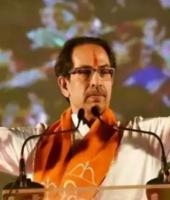
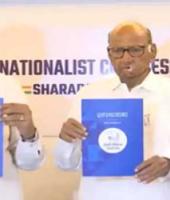


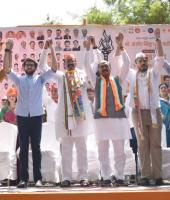
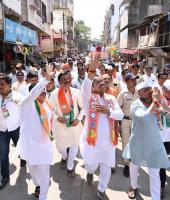

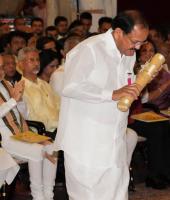


Comment List